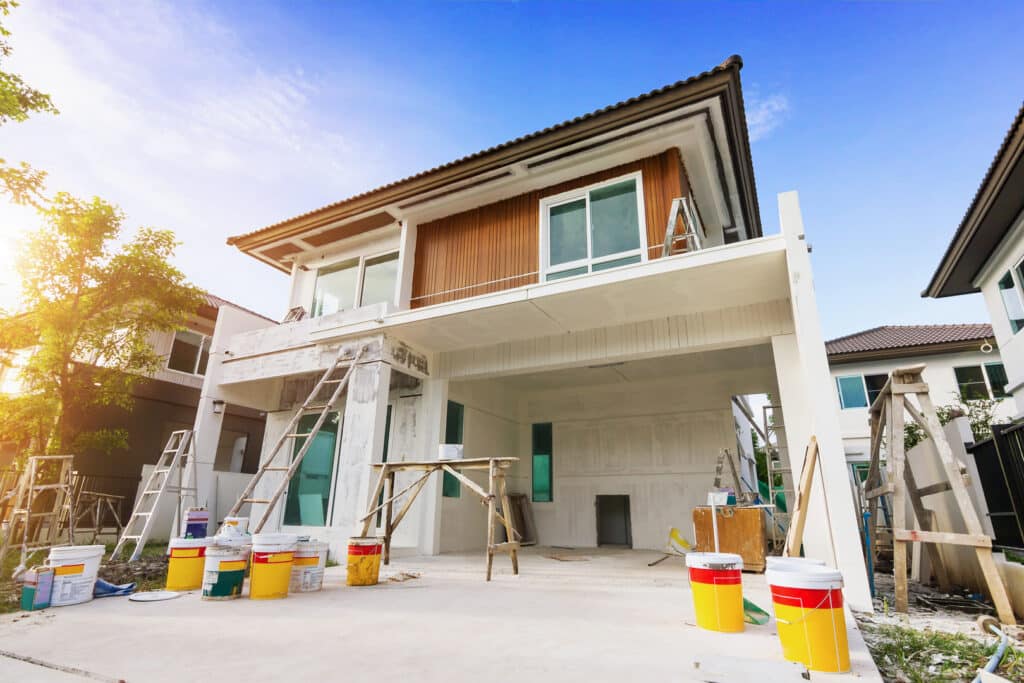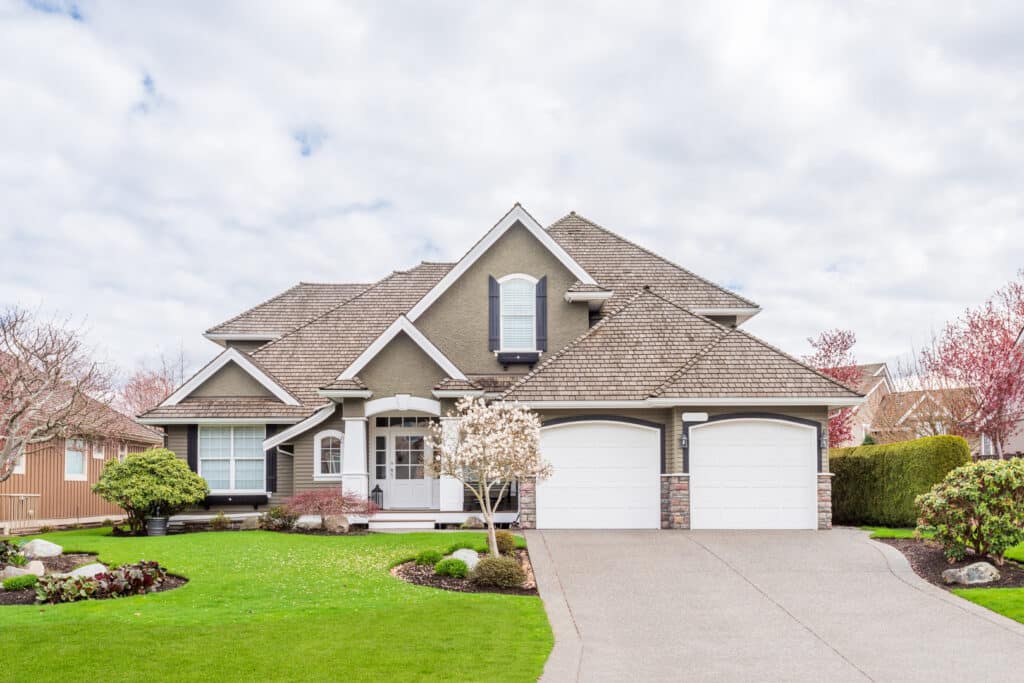Table of Contents
ToggleImagine using an 18-inch roller to paint a large room in half the time it usually takes. This is just one of the techniques top exterior residential painters use to get things done faster and professionally.
But remember, Rome wasn’t built in a day. Quality takes time, and these secrets can help improve your work —or the company you hire—but they can’t replace the importance of doing the job right.
In this article, we reveal 15 insider secrets for exterior painting projects. As a rule of thumb, you should paint the exterior of your property once every three to five years to guarantee the building’s structural integrity; however, knowing these tricks can extend the life of the paint and make the house look its best for longer.
15 Secrets the Best Exterior Painting Companies in Wichita KS Know

Looking to get your house painted in Wichita, Kansas? The best exterior painting companies here have over 30 years of experience. They know the local weather, price ranges, tools, and the best finishes to use. You can count on them and their recommendations!
1. Check the forecast.
We all know that the weather in Wichita can be quite unpredictable. One day it’s hot and humid; the next day it’s cold and windy. That’s why choosing the right time to paint your house is so important.
The best seasons for exterior painting in Wichita are spring (mid-April to early June) and fall (late September to early November). During these times, daytime temperatures typically range from 50°F to 85°F and are just right to allow the paint to cure as it should. This means you will have fewer problems with cracking and peeling. Avoid painting when nighttime temperatures drop below 32°F, as this could ruin the paint finish.

2. Choose the right tools for the job.
All exterior residential painters agree that the right tools are the basis of a painting project. Here are some unique must-haves that professionals rely on:
- 18-inch rollers: For larger exterior projects, they help you paint big, flat areas like walls and siding faster and with a smooth finish.
- Painter poles of varying lengths: Allow you to reach high or difficult spots without the need for a ladder. This makes work safer and saves time because ladders do not need to be constantly moved and adjusted.
- Multiple scrapers: These tools are perfect for removing old paint, dirt, and debris. Each type is designed for specific surfaces and allows the pain to adhere well.
These are just some of the tools you will need. But make sure to include them on your list.
3. Trim brushes and rollers.
Over time, brush filaments can bend and roller fibers can become uneven, causing ugly smudges and streaks.
Here’s a simple solution: check your paint tools regularly and trim bent brush filaments or high roller fibers with a pair of small, sharp scissors.
It only takes a few minutes of maintenance to keep your tools in top condition, saving you money on replacements and ensuring your tools apply paint evenly.
4. Leave no gaps in drop cloths.
To protect outdoor surfaces, such as porches and balconies, from spills and splashes, always overlap the sheets. Instead of placing them edge to edge, make sure they overlap by at least 4 inches. This is important because the sheets can shift when you move, and if they are not overlapping, exposed areas can be exposed to drips and splashes.
5. Use masking tape techniques.
Press and Push Masking Tape
Press the tape down firmly to get sharp, clean lines of paint. On uneven or textured surfaces, push the tape into gaps to prevent paint from seeping underneath.
Double Up the Tape
For areas prone to heavy paint drips or requiring more precision, double the tape. Apply a second layer on top of the first to create a wider barrier, ensuring that paint does not get through and saving time for touch-ups later.
6 Paint in the shade and use artificial light.
Whenever possible, paint in shaded areas.
Painting in the shade helps the paint dry more slowly, allowing for a more even application. This reduces the risk of brush strokes and passing marks and results in a smoother, more professional finish. Use artificial lighting to spot and fix any mistakes during the job.
7. Buy Foam Sanding Blocks.
If you are looking for a lighter, more versatile sanding tool, foam sanding blocks are an ideal solution. They are perfect for sanding edges, corners and curves, and can be used on flat surfaces or wrapped around handrails for degreasing. Foam blocks exert even pressure, are durable, reusable and washable.
8. Sealing joints and keeping the edge wet.
Before painting, be sure to caulk all gaps, joints and seams with a high-quality outdoor caulk for your siding. This step prevents moisture infiltration, which can cause paint peeling and wood rot.
And another tip. When painting, maintain a damp edge by overlapping each stroke of the roller or brush before the paint dries. This technique avoids stagnation marks.
9. Don’t be afraid to load the brush.
Dip the brush about one-third into the paint, then gently tap it against the side of the can to remove excess paint. Avoid rubbing the brush against the edge of the can, as this may remove too much paint and cause uneven coverage, especially in exterior walls exposed to damage.
10. Seal paint cans properly.
Always seal the cans properly for short-term storage. This will also reduce paint waste.
- Clean the edge of the lid: brush excess paint from the edge of the lid.
- Cover and press: Place a clean cloth on the lid and press firmly with the heel of your hand.
- Tap if necessary: If the lid does not seal with hand pressure, tap lightly around the edge of the lid with a small hammer or plastic mallet.
11. Keep the exterior hardware aside.
When painting the exterior of your home, remove all hardware items such as house numbers, light fixtures and doorknobs. Store them in labeled containers or bags so you can easily reinstall everything.
12. Get a roll of masking paper.
Masking paper is a single-use protective surface designed to cover large areas and prevent paint splatters. It is usually applied with a dispenser that spreads paper and tape simultaneously, but it is versatile even without a dispenser.
For example, you can set up a workbench with easels and a piece of plywood or MDF, then cover it with masking paper to keep the surface clean. It is perfect for propping up tools and materials and when finished, simply dispose of the used paper.
13. Slowly rotate the roller.
Load the roller well and spin it slowly as you lift it to the center of the wall or up to the ceiling in outdoor spaces. It’s a simple, effective trick that many professional painters use to get an even coat and reduce mess.
14. Using two putty knives and fixing nail heads
Buy two putty knives, one flexible and one rigid, when working on exteriors. The flexible knife is perfect for going behind drywall tape and applying stucco, while the rigid knife is ideal for scraping and cleaning channels.
Also, always secure the nail heads before painting. Use a nail set or spring center punch to ensure that all finish nails, stubs, and bent nails are properly attached or removed.
15. Think carefully about the color.
The paint color you choose can accentuate the beauty of your landscape and even increase your home’s market value. So, pay attention to these angles:
- Highlight your garden: If you have a flourishing garden, consider colors that make the plants stand out. For example, a dark exterior color can make greenery and flowers stand out more vividly. Think serene grays or rich charcoal colors that serve as a sophisticated backdrop for your colorful garden.
- Neutral elegance: White is a timeless choice that always looks fresh. It suits any style of garden and is especially attractive to potential buyers.
- Dark drama: Dark colors such as deep blues, greens, and blacks are increasingly popular for their “dramatic effect”. These colors can save on primer costs if you paint over a lighter color and often require fewer coats. However, keep in mind that dark colors absorb more heat and can fade more quickly.
- Selling Point: According to real estate studies, homes with black or charcoal gray front doors tend to sell more. If you’re planning to sell, take this into account.
- Seasonal considerations: Always choose weather-appropriate paints. Some paints are formulated to adhere better to lower temperatures, allowing some flexibility in painting seasons.
We recommend always trying paint colors on a small section of the exterior to see how they look under different conditions.
Wondering who are the best exterior residential and commercial painters in Wichita? Visit us and reach out!
Benefits of Hiring a Professional Home Painting Service

When considering a home painting service, particularly for residential needs, hiring exterior residential painters can prove to be the best choice. Opting for a full-service painting offers numerous benefits beyond just painting exteriors.
- First, professionals are perfect for performing complex tasks such as painting cabinets, vaulted ceilings, high walls or exterior shutters. They have years of experience and can handle different surfaces, textures and finishes safely and efficiently.
- Second, quality control is a great advantage. Professional painters are trained to achieve precise, flawless finishes that are difficult to achieve with do-it-yourself methods. Hiring exterior painting companies like Koehn Painting can bring high-quality results.
- Third, professionals save you time. They work quickly and efficiently, completing projects faster than those with less experience. This means you can enjoy your newly painted outdoor space sooner, with no hassle.
- Finally, many professional painters offer warranties or guarantees. If you are not satisfied with the result or if you need a repair at a later date, the painter will take care of it at no additional cost to you.
For example, Koehn Painting offers a 100% satisfaction guarantee and a 1-year warranty. If paint fails due to a defective product or application, the company will return it free of charge for repair.
Although do-it-yourself painting projects can be rewarding, there are obvious advantages to hiring a professional painter, especially for larger or more complex projects. For residential painting needs in Wichita, rely on professionals who can handle the job with precision and care. When in doubt, turn to a Koehn Painting painter to get the best results for your home at the best price. Enjoy the peace of mind that comes from a job well done.
Exterior Residential Painters: Conclusion

We hope these 15 tips from the best exterior residential painters have been helpful and insightful for all of you, our readers.
If you’re considering renovating your exterior spaces, be sure to keep these recommendations in mind—they will make your job easier! Remember, quality comes with experience, and Koehn Painting can provide you with both.
Discover the Koehn Painting difference – contact us today for a free estimate and step into a unique, freshly painted outdoor environment!





